Things to do & see
Imagine an island where history, nature and culture are intertwined. Welcome to the island of Rab, Croatia’s gem that promises unforgettable experiences. Whether you’re an adventure junkie, a history buff or simply looking to relax by the sea, Rab has it all.
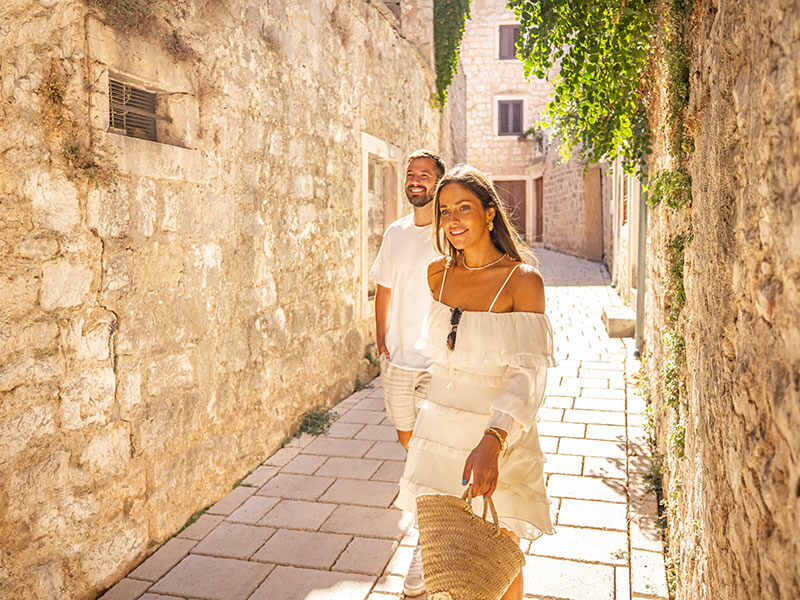
Discover the best of the island of Rab
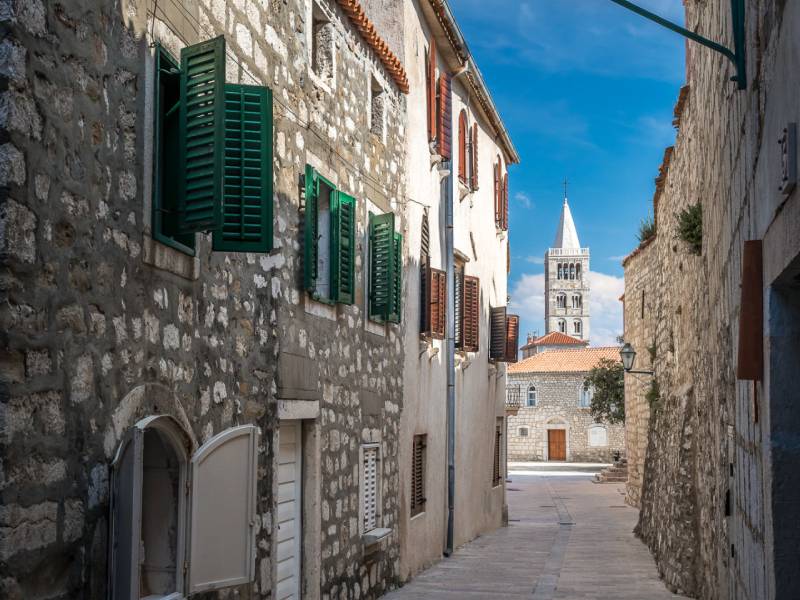
The old town of Rab
The picturesque old town of Rab, which gave the island its name, is recognisable by its four bell towers that give the town the appearance of a sailing ship with four masts. It’s a labyrinth of narrow streets, historic buildings and charming squares. Walking through the old town feels like stepping back in time, with each corner revealing a piece of Rab’s rich history. The town’s architecture, influenced by Venetian and Roman styles, adds to its enchanting atmosphere. From lovely cafés to boutique shops, the old town offers a blend of history and modern-day amenities.
- Type of attraction: historical site
- Location: Rab Town
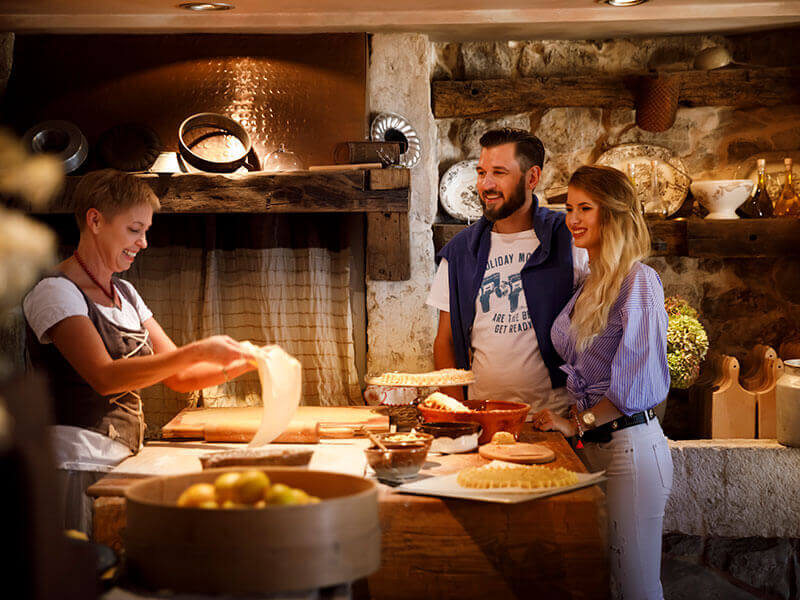
House of Rab cake
A visit to Rab island wouldn’t be complete without stopping by the House of Rab cake in the old town. This delightful spot is dedicated to Rab’s famous dessert, made from almonds, lemons and Maraschino liqueur. The original 12th-century recipe, kept by the Benedictine sisters, requires up to three days of preparation. Enjoy this tender shortcrust pastry with an aromatic almond and maraschino core while learning about its rich history and preparation methods in a charming setting.
- Type of attraction: culinary experience
- Location: Ul. Stjepana Radića 5, Rab Town
- Contact information: +385 51 774 863, e-mail: rabskatorta@gmail.com
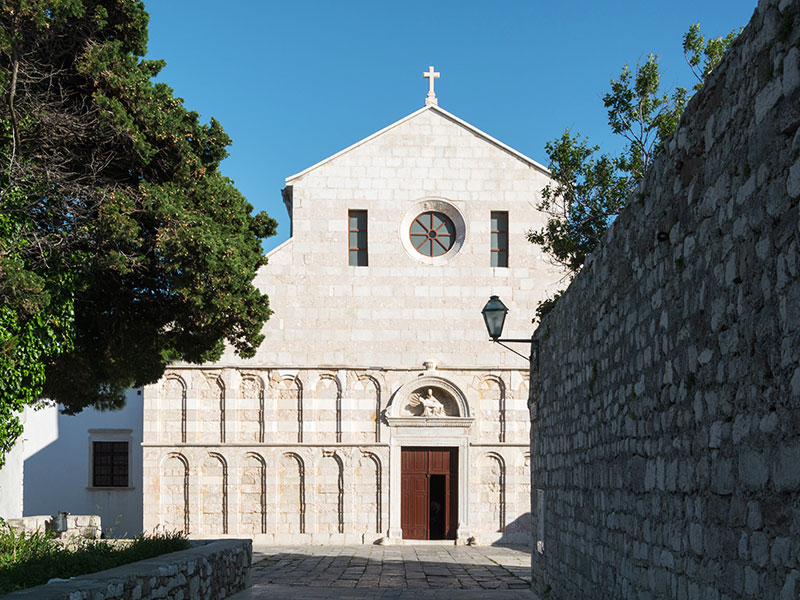
Rab Cathedral and the bell tower
The Rab Cathedral, also known as the Cathedral of St Mary the Great, is a must-see landmark with Romanesque architecture and a stunning 26-metre bell tower offering breathtaking views of the Adriatic Sea. Consecrated by Pope Alexander III in 1177, it is dedicated to the Assumption of Our Lady and houses the relics of St Christopher, Rab’s patron saint. Climbing the bell tower provides a unique perspective on Rab’s beauty.
- Type of attraction: religious site
- Location: Rab’s old town
- Contact information: +385 51 771 111, e-mail: tzg-raba@ri.htnet.hr
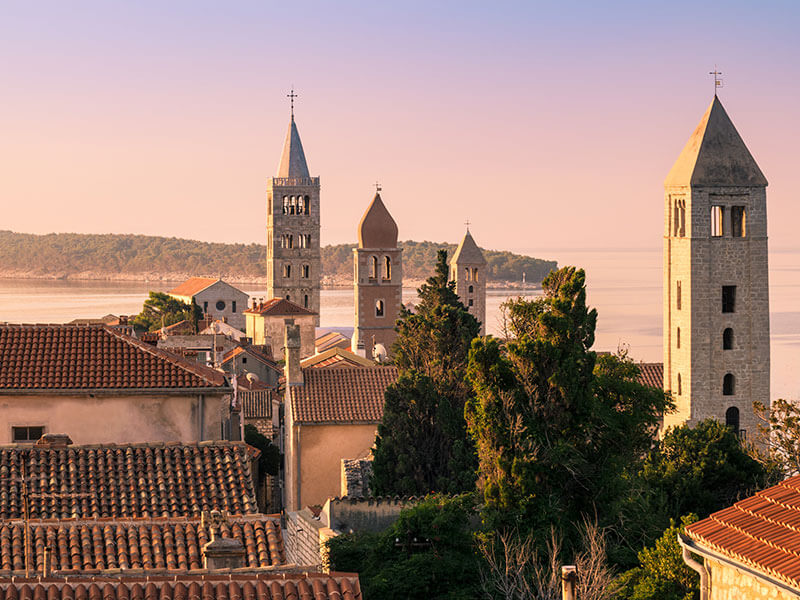
Church of St Christopher and the Lapidarium
Dedicated to Rab’s patron saint, the 14th-century Church of St Christopher sits on the highest point in the old town. Built from rough stone blocks and renovated in 1979, it now houses a lapidarium featuring ancient stone artifacts. This small museum offers a glimpse into Rab’s past, displaying well-preserved relics from the 2nd and 3rd centuries to the late 18th century, allowing visitors to explore the island’s rich historical heritage.
- Type of attraction: religious site, museum
- Location: Rab’s old town
- Contact information: +385 51 777 341, e-mail: info@ucilisterab.hr
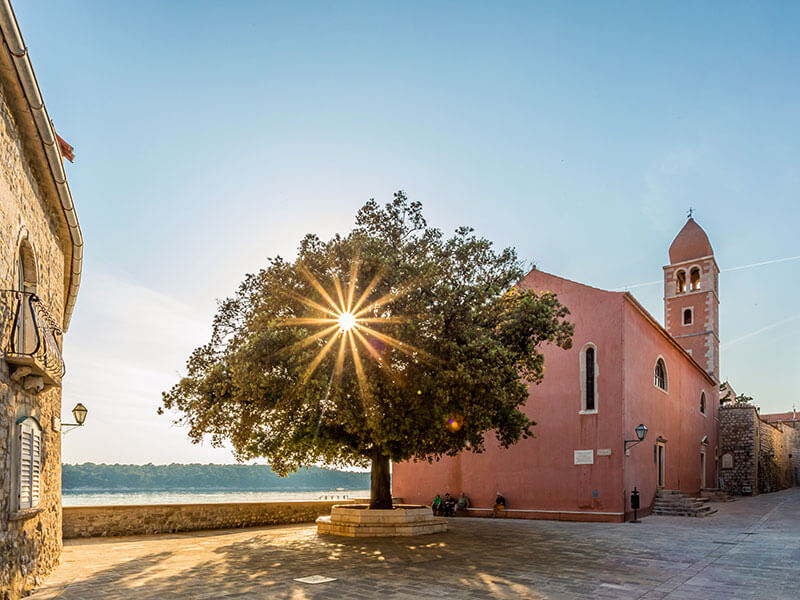
Sacred art in the Church of St Justine
If you love the arts, don’t miss the impressive collection of sacred items and artworks in the restored Church of St Justine on Trg Slobode (Freedom Square). This small museum, housing paintings, sculptures and religious artefacts from the 11th to the 18th century, features treasures from the Cathedral’s treasury, abandoned Rab churches and the Convent of St Anthony the Abbot. The bell tower of St Justine’s, built in 1672, is the last of Rab’s four iconic bell towers.
- Type of attraction: religious site and museum
- Location: Rab’s old town
- Contact information: +385 51 771 111, e-mail: tzg-raba@ri.htnet.hr
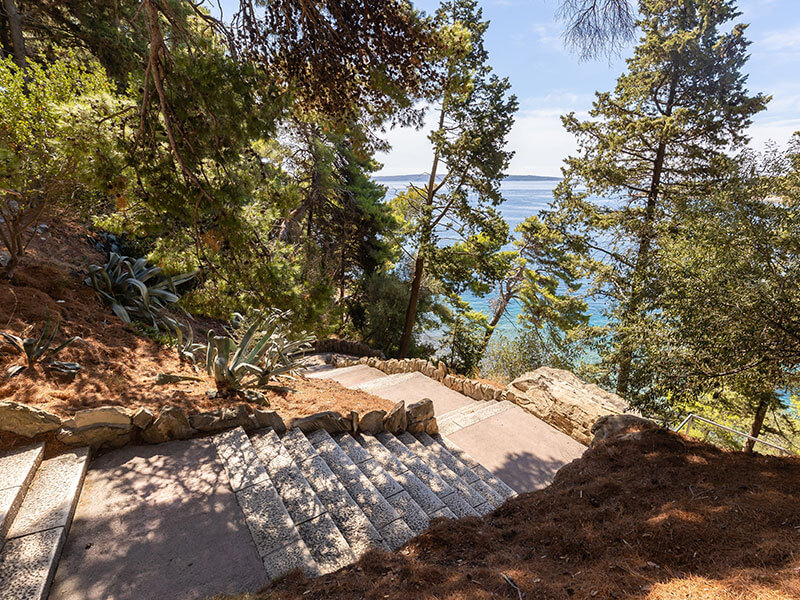
Komrčar Forest Park
For a relaxing escape into nature, visit Komrčar Forest Park. This green space, covering eight hectares, offers scenic walking trails, picnic spots and stunning views of the Adriatic Sea. Enjoy the refreshing shade of pines, oaks, cypresses, olives and palms, alongside exotic agaves and cacti. The park also features a monument to Pravdoje Belija, the forestry expert responsible for its creation. Thanks to his efforts, Rab is one of the greenest islands in the Adriatic.
- Type of attraction: natural site
- Location: northwest of Rab Town
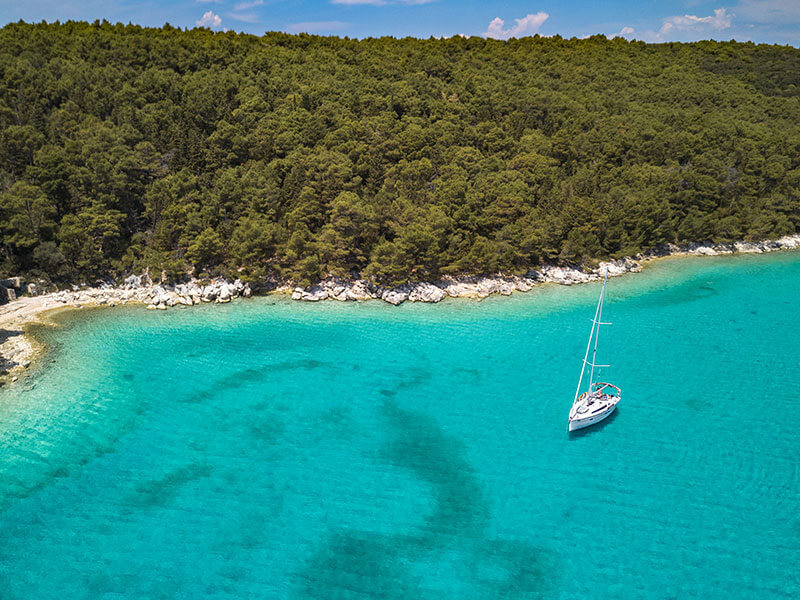
Dundo Forest
Another natural gem on Rab island is Dundo Forest, a protected area renowned for its diverse flora and fauna. Covering 100 hectares on the Kalifront peninsula, it is one of the most beautiful and best-preserved holm oak forests in the Mediterranean. The forest’s well-marked trails, including part of the famous Premužić trail, make it easy to explore by bike or on foot. Dundo Forest offers a peaceful retreat for hikers and outdoor lovers seeking tranquillity in nature.
- Type of attraction: natural site
- Location: north-western part of Rab island
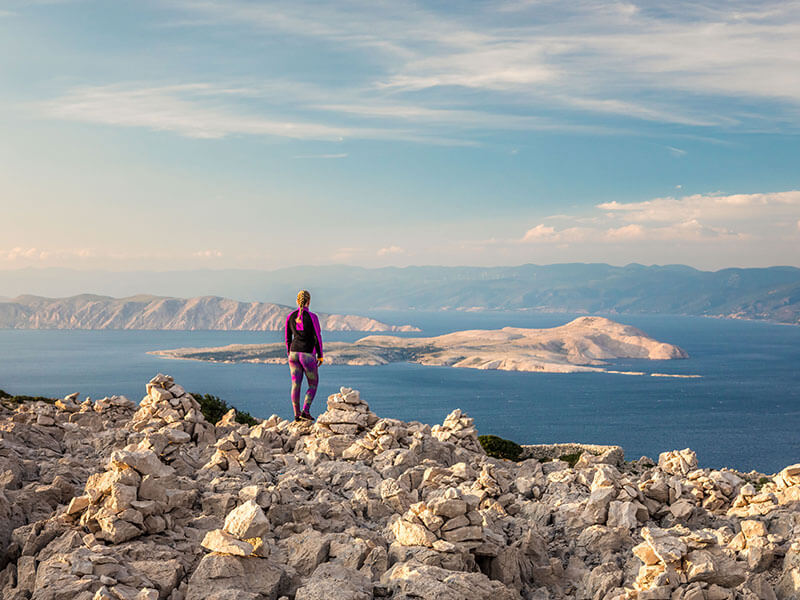
Kamenjak Peak
Kamenjak Peak is the highest point on Rab island, located 408 metres above sea level and offering panoramic views of the landscape and the Adriatic Sea. The moderately challenging hike to the summit is well worth the effort for its breathtaking vistas. Starting from Mundanije, the 3.2 km path takes about 45 minutes on foot, leading partly through the forest and then through a rocky landscape with low vegetation. From the peak, enjoy impressive views of the mainland and Mount Velebit rising above the sea.
- Type of attraction: scenic viewpoint
- Location: central part of Rab island, hiking trails from various points
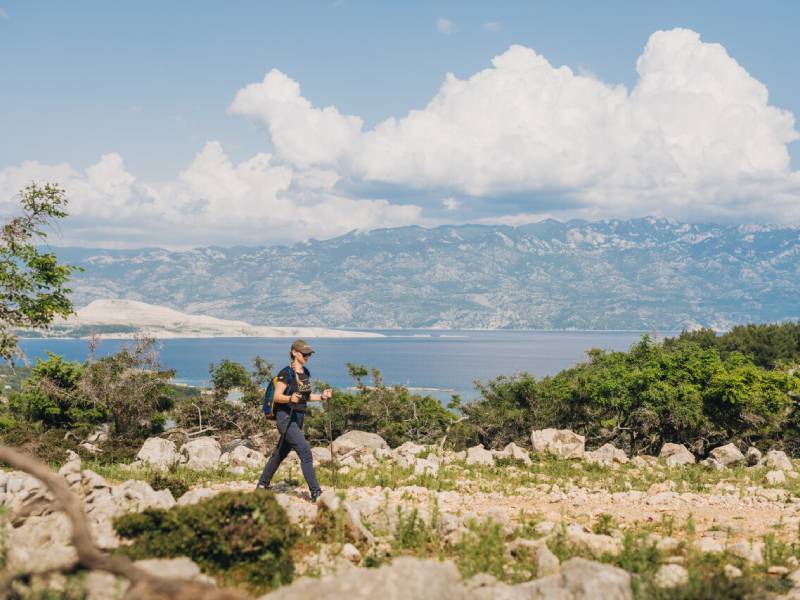
Rab Archaeological (T)races
Explore Rab’s history through its Archaeological (T)races, a series of well-preserved sites that offer insight into the island’s ancient past. Perfect for history enthusiasts, these trails provide a fascinating glimpse into Rab’s archaeological heritage. Discover the Capo Fronte, Epario and Frux educational trails using the Rab Archaeological (T)races mobile app or map from the Tourist Board office. Covering 30 sites in Kampor, Lopar and Supetarska Draga, these trails showcase cultural treasures either in their original locations or at clear viewpoints.
- Type of attraction: historical trails
- Location: various locations across Rab Island
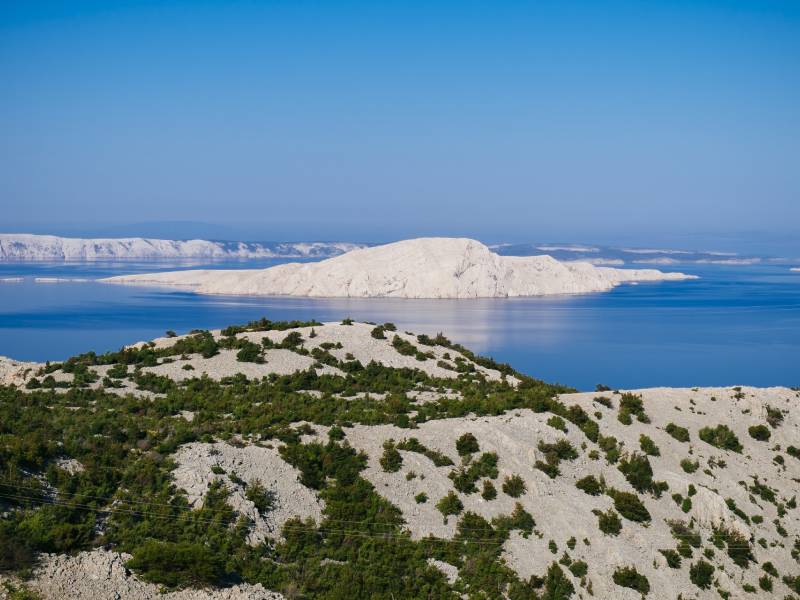
Goli Otok
Goli Otok, also known as the “Croatian Alcatraz”, is an abandoned prison island with a haunting history located in the Velebit Channel, five kilometres from Rab. Best known for housing a notorious political prison during the Yugoslavian period, its first inmates arrived in 1949. Prisoners endured harsh conditions, performing hard manual labour in quarries and bauxite mines. Abandoned in 1989, the island is now partly in ruins, serving as a sobering reminder of this dark period. Today, it attracts tourists and Rab shepherds who bring their sheep for grazing.
- Type of attraction: historical site
- Location: island near Rab
- Contact information: +385 51 724 064
Customer services
Other services
Valamar Riviera d.d. has accommodation facilities in the Republic of Croatia and the Republic of Austria, where it operates through its branch Valamar Riviera d.d., Zweigniederlassung Austria, Gamsleitenstraße 6, 5563 Obertauern, FN 583355 a (Landesgericht Salzburg), VAT ID: ATU 78289647. Additionally, Valamar is a management company that, based on contracts, manages the tourism segment of the business and offers accommodation services in the facilities of Imperial Riviera d.d., Republic of Croatia, Rab, Jurja Barakovića 2, OIB: 90896496260 and HELIOS FAROS d.d., Republic of Croatia, Stari Grad, Naselje Helios 5, OIB: 48594515409. The term Valamar properties includes accommodation facilities of Valamar Riviera d.d., in Croatia and Austria, as well as accommodation facilities of other companies it manages.
